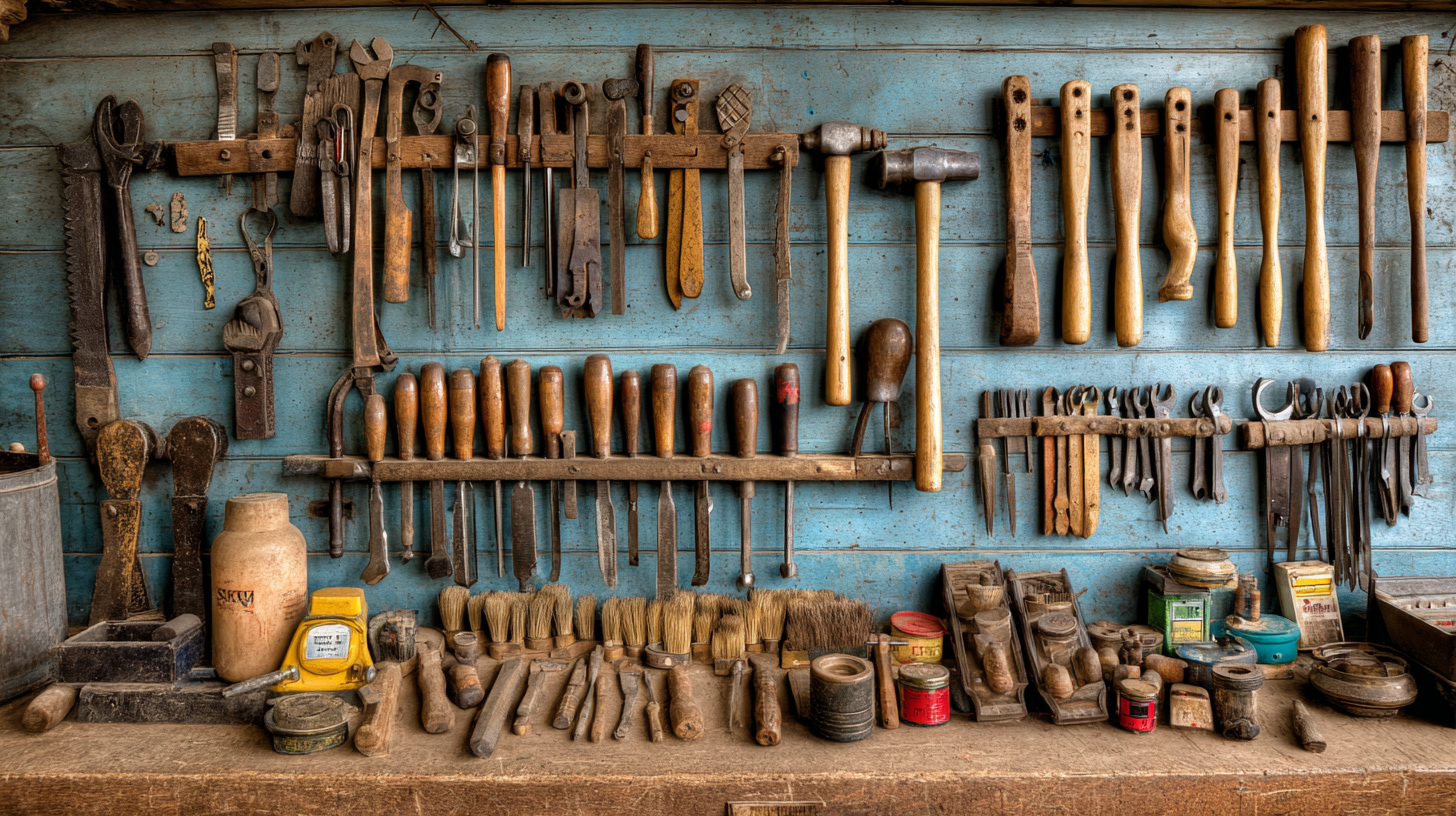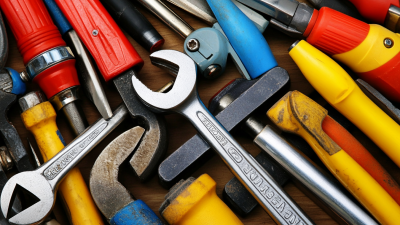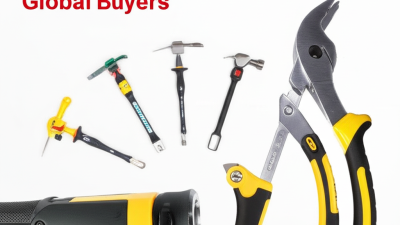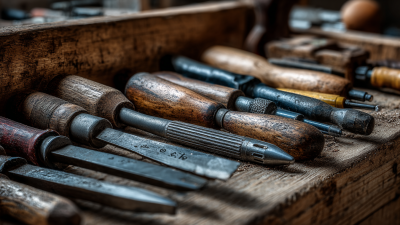Blog
Ultimate Guide to Selecting the Right Hand Tools for Every DIY Project Based on Expert Industry Insights
In the ever-evolving world of DIY projects, selecting the right hand tools is essential for both efficiency and quality of work. According to a recent report by the Home Improvement Research Institute, approximately 70% of homeowners engage in some form of DIY, highlighting the significant demand for reliable hand tools that cater to various tasks. Additionally, industry experts suggest that using appropriate tools can reduce project time by up to 50%, emphasizing the critical role of hand tools in effective DIY execution. This ultimate guide aims to empower enthusiasts and professionals alike with expert insights into hand tool selection, ensuring that every DIY venture is equipped with the best tools for the job. With the right hand tools at your disposal, the possibilities are limitless, transforming challenges into seamless results.

Understanding Different Types of Hand Tools and Their Uses in DIY Projects
When embarking on a DIY project, understanding the different types of hand tools available can significantly enhance both efficiency and craftsmanship. According to a recent industry report from the Hand Tools Manufacturers Association, nearly 70% of DIY enthusiasts cite tool selection as a primary factor influencing the outcome of their projects. From hammers to screwdrivers, each tool serves a specific purpose that can affect precision and ease of use.
For instance, a claw hammer is essential for driving nails into wood, while a rubber mallet is often preferred for assembling furniture without damaging the surface. Additionally, screwdrivers, which come in various head types such as Phillips and flathead, are indispensable for assembling and disassembling hardware. The reported increase in DIY home improvement projects, especially since the pandemic, underscores the importance of selecting the right tools. Research indicates that 48% of home improvement consumers actively seek guidance on tool selection to avoid common project pitfalls. Understanding these tools and their correct applications is crucial for achieving professional results in DIY endeavors.
Ultimate Guide to Selecting the Right Hand Tools for Every DIY Project
Key Considerations When Choosing Hand Tools for Your Specific Needs
When selecting hand tools for your DIY projects, understanding your specific needs is crucial. Start by assessing the nature of your tasks—are you engaged in woodworking, plumbing, or electrical work? Different projects demand different tools; for instance, a carpenter will need a reliable set of chisels and a tape measure, while someone tackling plumbing repairs may prioritize pipe wrenches and pliers. Identifying the primary functions you require will streamline your tool selection process and enhance your project efficiency.

Additionally, consider factors such as tool weight, grip comfort, and material quality. Comfortable handles can significantly affect your performance, especially during extended use. Tools made from durable materials like stainless steel or high-carbon steel will not only provide longevity but also improve safety and reliability. Furthermore, take into account your budget; investing in quality tools can save money in the long run by reducing the need for replacements. Ultimately, ensuring that your chosen tools align with your specific project requirements and personal preferences will lead to more successful and enjoyable DIY experiences.
Expert Tips for Assessing Quality and Durability of Hand Tools
When it comes to choosing hand tools for your DIY projects, assessing the quality and durability of these tools is paramount. High-quality tools not only enhance the efficiency of your work but also ensure safety and longevity. One effective way to gauge a tool’s durability is to inspect its materials; tools made from high-grade steel or resistant alloys typically offer better performance and resilience over time. Additionally, checking for features such as ergonomic designs and well-made grips can greatly influence your overall experience and effectiveness while using the tool in various tasks.
Moreover, consulting expert reviews and performance tests can provide invaluable insights into the reliability of a tool. Many seasoned DIYers and professionals recommend focusing on brands or models that have a proven track record and favorable ratings from long-term users. This can prevent you from wasting time and money on inferior products. By combining these assessment strategies with practical experience, you can build a solid toolkit that will support your DIY ambitions for years to come.
Ultimate Guide to Selecting the Right Hand Tools for Every DIY Project Based on Expert Industry Insights
| Tool Type | Quality Indicators | Durability Ratings | Ideal Usage | Price Range |
|---|---|---|---|---|
| Hammer | Balanced weight, smooth handle | 7/10 | Framing, general repairs | $15 - $50 |
| Screwdriver | Magnetic tips, durable steel | 8/10 | Assembling furniture, electronics | $5 - $30 |
| Pliers | Ergonomic grips, precision tips | 9/10 | Wiring, gripping, cutting | $10 - $40 |
| Wrench | Adjustable, anti-slip | 8/10 | Plumbing, automotive | $10 - $50 |
| Tape Measure | Sleek casing, clear markings | 8/10 | Measuring lengths, layouts | $8 - $25 |
Best Practices for Organizing and Maintaining Your Hand Tools
When it comes to effective organization and maintenance of hand tools, implementing best practices can significantly enhance the longevity and usability of your tools. According to a 2020 report by the Hand Tools Manufacturers Association, improper storage can reduce the lifespan of hand tools by up to 50%. Therefore, it's crucial to invest in quality tool storage solutions such as modular toolboxes or pegboards that allow for easy access and visibility. Keeping tools organized not only saves time during projects but also minimizes the risk of accidents in the workspace.
Regular maintenance is equally important; a study by the National Safety Council revealed that 30% of tool injuries are due to poorly maintained equipment. Simple practices, such as cleaning tools after each use, lubricating moving parts, and checking for any signs of wear or damage, can greatly reduce the risk of injury and ensure tools are always ready for your next DIY project. Using a maintenance log can help track service intervals for more complex tools, ensuring that all equipment remains in peak condition. By adhering to these best practices, DIY enthusiasts can create a safer and more efficient work environment.
Safety Guidelines to Follow During DIY Projects with Hand Tools
 When undertaking DIY projects, ensuring safety while using hand tools is paramount. According to the U.S. Consumer Product Safety Commission, approximately 400,000 injuries related to hand tools are reported annually, underscoring the critical need for precautionary measures. The first rule of thumb is to always wear appropriate personal protective equipment (PPE), including safety gloves, goggles, and sturdy footwear. These items can significantly reduce the risk of injury, providing an essential buffer against potential mishaps.
When undertaking DIY projects, ensuring safety while using hand tools is paramount. According to the U.S. Consumer Product Safety Commission, approximately 400,000 injuries related to hand tools are reported annually, underscoring the critical need for precautionary measures. The first rule of thumb is to always wear appropriate personal protective equipment (PPE), including safety gloves, goggles, and sturdy footwear. These items can significantly reduce the risk of injury, providing an essential buffer against potential mishaps.
Furthermore, the proper handling and maintenance of tools cannot be overstated. A report by the National Safety Council highlights that nearly 30% of tool-related injuries occur due to improper tool use or choice. Ensuring that your tools are well-maintained, sharp, and suited to the task at hand is vital. Additionally, it is essential to work in a clear, organized space to minimize distractions and hazards, allowing you to focus on the task safely. By adhering to these safety guidelines, DIY enthusiasts can protect themselves while achieving remarkable results in their projects.
Related Posts
-

7 Essential Reasons Why Home Hand Tools Are a Must for Every DIY Enthusiast
-

Understanding Global Trade Compliance for Hand Tools and How to Navigate Import Regulations
-

7 Innovative Uses of Hand Tools in Modern Industries: 5 Reasons They’re Essential for Every Workshop
-

Elevating Quality with Chinese Made Home Hand Tools for Global Buyers
-

The Ultimate Guide to Choosing the Right Hand Tools for Every DIY Project
-

Unlocking Precision: How Quality Hand Tools Transform Your DIY Projects into Masterpieces
